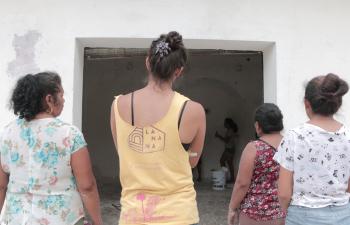Community Development in Mexico is crucial for many reasons. First of all, it aids in addressing some of the most significant social and economic problems that local communities encounter. It can, for instance, aid in the development of affordable housing, the decrease of crime, and the provision of healthcare and education. Furthermore, community development fosters diversity and inclusivity by attempting to guarantee that all individuals have a say in the choices that affect their lives.
What precisely is the purposeful goal of community development, then? Enhancing community quality of life is the main objective. This could be constructing robust and resilient neighbourhoods, developing sustainable communities, or just ensuring that everyone has access to the resources they require to survive. Hence, whatever is the project taken up, contracting with the community development volunteers to build up a better Mexico yields fruitful results at the present and even in future.

What is the Attached Purpose of Community Development That States Its Importance?
Community development aims to improve people's quality of life in their communities by uniting people to work toward a common goal. It's an effective tool that tackles social and economic problems, encourages diversity and inclusivity, and gives communities the confidence to take initiative. Thousands of community development initiatives, ranging from construction projects to teaching initiatives, are positively impacting communities in Mexico, thanks to the efforts and skills of community development volunteers.
1.Community Development's Economic Advantages
- * A greater understanding of the available financial opportunities and resources (housing, childcare, education, financial literacy, etc.).
- * A rise in investor interest
- * An increase in jobs and entrepreneurship
2.Systemic Benefits of Community Development:
- * Identifying and reducing inefficiencies and redundant efforts
- * Providing strategic continuity between community services and initiatives within those services
- * Creating measurement frameworks to guide optimizations for ongoing, long-term improvement and assess success
3.The Health Benefits of Neighborhood Improvement
- * Better physical health associated with more easily accessible and reasonably priced recreational opportunities
- * Greater knowledge of and accessibility to health resources (such as food assistance and mental and physical health services).
- * A rise in physical safety as a result of a decline in crime
4.The Emotional Advantages of Neighborhood Improvement
- * A stronger sense of empowerment to take charge of one's fate
- * A stronger sense of kinship and inclusion within the community at large
- * A stronger sense of security and trust
Making Sure the Social Impact Lasts
Making sure that the projects and programs being carried out are having a beneficial effect requires measuring community development. Organizations and individuals can gauge the success of their work and make required modifications by tracking and analyzing the results of community development initiatives. Community development revolves around social impact, and without the right procedures in place, it can be challenging to assess how initiatives are affecting communities. The fulfilling theory attributed to the steps the volunteers take marks the success of the community development programs.
Organizations can more effectively communicate the outcomes of their work and obtain funding for additional projects by monitoring and reporting on the effects that community development initiatives are having.
To put it briefly, the significance of quantifiable community development cannot be emphasized enough. It's an essential part of sustainable and successful community development, assisting in ensuring that the projects and programs being carried out are impacting communities globally and improving people's lives as intended.
One effective strategy for bringing about constructive change in communities is community development. These programs aim to raise everyone's standard of living, whether it be via economic development, women's empowerment, healthcare, or education. Volunteers in community development form alliances and collaborate with stakeholders to determine the objectives and needs of the community. This could entail working with local leaders, running focus groups, or conducting surveys. The next step in the community development process is to plan and implement projects and programs that will help achieve the desired outcomes after these needs and goals have been identified.
